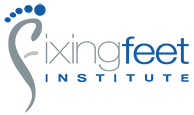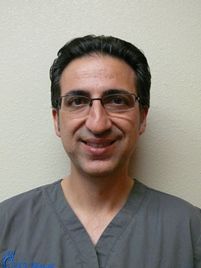We hear about heel spurs quite often, but many people aren't sure about what they are.
Heel spurs, also known as plantar fasciitis, are an inflammation of the plantar fascia and a common cause of heel pain. The plantar fascia is a thin, flat band of connective tissue that stretches from the bottom of the heel bone to the ball of the foot. Inflammation occurs when too much strain causes little tears in the plantar fascia. This is an injury that is usually caused by repetitive stress such as walking or running. Other factors include wearing worn-out shoes, being overweight, and starting a new exercise program. These small tears can spread to become one big tear.
Once you have visited a podiatrist and they have determined that you are in fact suffering from a heel spur, treatment can be handled a few different ways.
Heel Spur Treatments From Your Podiatrist
- Strapping. Your podiatrist may apply athletic tape to your foot in a particular fashion to take the tension off the plantar fascia. He or she may also add a pad in your arch for additional support. The strapping stays on your foot for just a few days. It usually gives you relief while it is on.
- Surgical shoe. A surgical shoe is a shoe with Velcro straps and a rocker bottom sole. It also helps to take tension off the plantar fascia. You may need to wear it every day until the pain is relieved.
- Soft cast. A soft cast is made of several layers of compression gauze, padding, and compression bandage. It is applied from the toes all the way to the knee. It is not hard and you can still move your foot and ankle and walk on it.
- Brace. A brace is usually made from soft materials and Velcro straps or semi-hard plastic materials. It goes around your foot and ankle and fits inside your shoe.
- Walking boot. A walking boot is made with hard plastic or metal materials. It goes on your foot and lower leg, and Velcro straps hold it together. It may also have air pockets inside to give you compression. You will wear this device whenever you are walking or standing. It can also be used as a night splint to stretch the plantar fascia.
- Cortisone shot. Cortisone is a very potent anti-inflammatory drug. A small dose is injected at the site of inflammation. This shot may be a little painful depending on the amount of inflammation you are experiencing.
- Physical therapy. Physical therapists are specially trained to perform specific treatments on the plantar fascia to reduce inflammation and stimulate healing.
- Plantar fascia night splint. This device is usually made from plastic, padding, and straps. You put it on your foot and leave it on overnight to stretch the plantar fascia. You should not walk on this device due to a risk of falling.
- Custom-made functional foot orthotics. These are prescription devices made from molds of your feet. They are made in an orthotic lab with plastic materials and a top cover to give you some padding. It is essential that the orthotics give you proper arch support to decrease the strain on the plantar fascia.
- Extracorporeal pulse activation treatment (EPAT). This therapy device produces waves of pressure through your skin and into the plantar fascia. As a result, it increases the local blood flow in the area to speed up healing. You will need several treatments to get optimum relief.
- Therapy laser. This therapy device sends light energy through the skin to increase the local blood flow to the area. You will need several treatments to get relief.
- Surgery. Surgery is only necessary when you have tried other treatments and you have not improved. It is extremely rare that you may need surgery, because most people respond to a combination of less-invasive treatments. Surgery usually involves either cutting a portion of the plantar fascia or cutting out a small portion of the plantar fascia and removing the spur.


